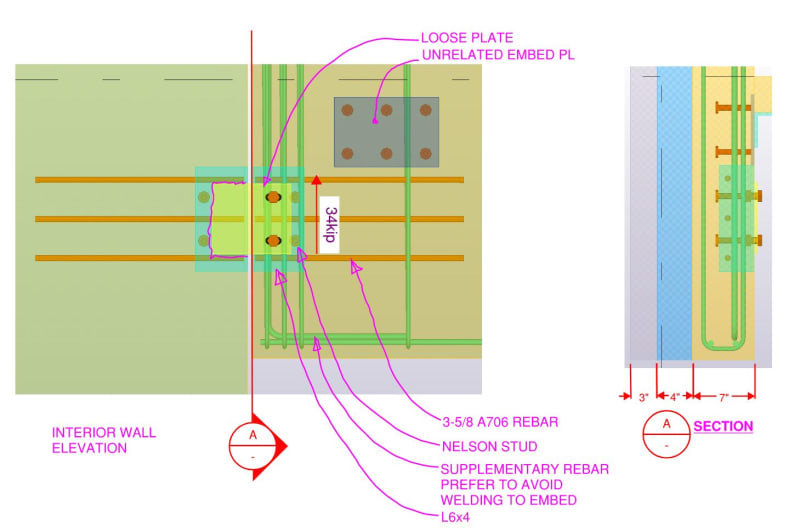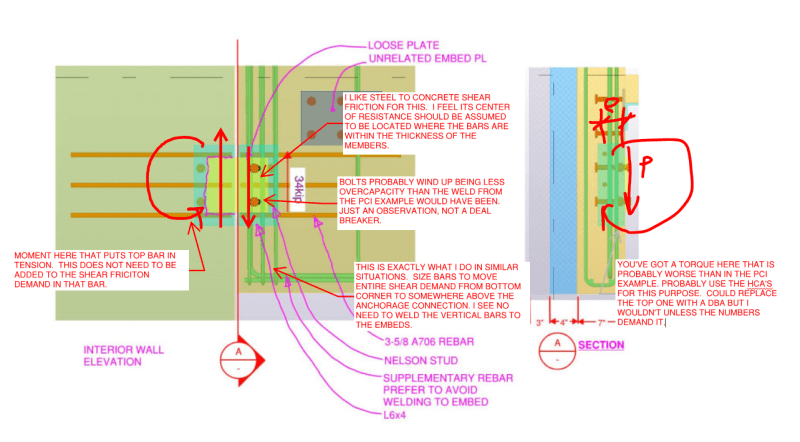Brad805
Structural
- Oct 26, 2010
- 1,518
I am in the midst of designing shear connections (below) for a precast concrete project that will rely upon dowel action. The example below is the lightest load. I am interested to hear other engineers approach in a case like this. I know there are many details others will prefer, but this is what I have been asked to evaluate. I will include some screenshots from the NLFEA analysis when I am satisfied with the results. I am still testing different interface material models.
Options:
1. Problem is similar to PCI (7th Edition) example 6.13.5. That example does not really address dowel action in my mind.
2. Shear friction
3. CEB-FIP Model code 2010 section 6.3.4 shows a methodology to estimate dowel action based on estimated slip values.
4. CEB-FIP Bulletin 43 section 8.2.3 outlines methods to predict the capacity based on dowel action.
5. Vintzeleou and T. P. Tassios paper from 1986. STUDY
6. Other?
7. Load tests. Time will not permit.
8. STM
The project is in Canada.

Options:
1. Problem is similar to PCI (7th Edition) example 6.13.5. That example does not really address dowel action in my mind.
2. Shear friction
3. CEB-FIP Model code 2010 section 6.3.4 shows a methodology to estimate dowel action based on estimated slip values.
4. CEB-FIP Bulletin 43 section 8.2.3 outlines methods to predict the capacity based on dowel action.
5. Vintzeleou and T. P. Tassios paper from 1986. STUDY
6. Other?
7. Load tests. Time will not permit.
8. STM
The project is in Canada.



